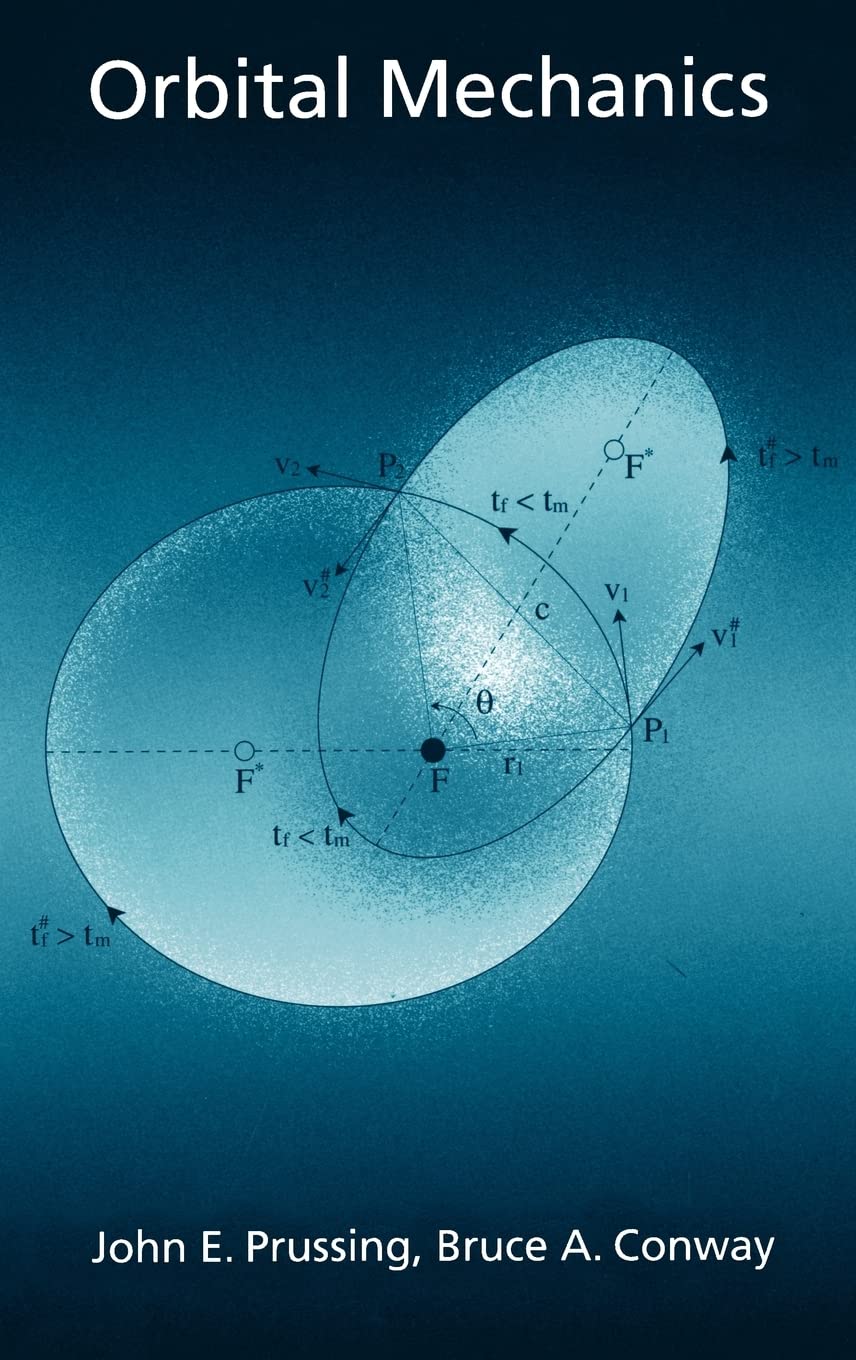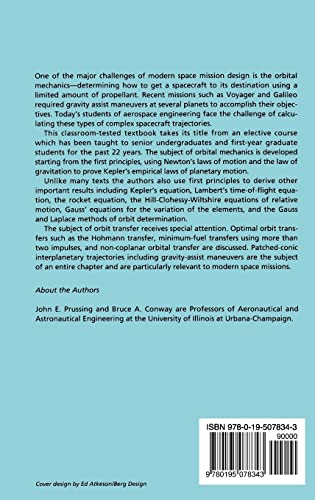
Title


Orbital Mechanics,Used
Delivery time: 8-12 business days (International)
One of the major challenges of modern space mission design is the orbital mechanics determining how to get a spacecraft to its destination using a limited amount of propellant. Recent missions such as Voyager and Galileo required gravity assist maneuvers at several planets to accomplish their objectives. Today's students of aerospace engineering face the challenge of calculating these types of complex spacecraft trajectories. This classroomtested textbook takes its title from an elective course which has been taught to senior undergraduates and firstyear graduate students for the past 22 years. The subject of orbital mechanics is developed starting from the first principles, using Newton's laws of motion and the law of gravitation to prove Kepler's empirical laws of planetary motion. Unlike many texts the authors also use first principles to derive other important results including Kepler's equation, Lambert's timeofflight equation, the rocket equation, the HillClohessyWiltshire equations of relative motion, Gauss' equations for the variation of the elements, and the Gauss and Laplace methods of orbit determination. The subject of orbit transfer receives special attention. Optimal orbit transfers such as the Hohmann transfer, minimumfuel transfers using more than two impulses, and noncoplanar orbital transfer are discussed. Patchedconic interplanetary trajectories including gravityassist maneuvers are the subject of an entire chapter and are particularly relevant to modern space missions.
By changing our most important processes and
products, we have already made a big leap forward. This ranges from the
increased use of more sustainable fibers to the use of more
environmentally friendly printing processes to the development of
efficient waste management in our value chain.
⚠️ WARNING (California Proposition 65):
This product may contain chemicals known to the State of California to cause cancer, birth defects, or other reproductive harm.
For more information, please visit www.P65Warnings.ca.gov.
Shipping & Returns
Shipping
We ship your order within 2–3 business days for USA deliveries and 5–8 business days for international shipments. Once your package has been dispatched from our warehouse, you'll receive an email confirmation with a tracking number, allowing you to track the status of your delivery.
Returns
To facilitate a smooth return process, a Return Authorization (RA) Number is required for all returns. Returns without a valid RA number will be declined and may incur additional fees. You can request an RA number within 15 days of the original delivery date. For more details, please refer to our Return & Refund Policy page.
Shipping & Returns
Shipping
We ship your order within 2–3 business days for USA deliveries and 5–8 business days for international shipments. Once your package has been dispatched from our warehouse, you'll receive an email confirmation with a tracking number, allowing you to track the status of your delivery.
Returns
To facilitate a smooth return process, a Return Authorization (RA) Number is required for all returns. Returns without a valid RA number will be declined and may incur additional fees. You can request an RA number within 15 days of the original delivery date. For more details, please refer to our Return & Refund Policy page.
Warranty
We provide a 2-year limited warranty, from the date of purchase for all our products.
If you believe you have received a defective product, or are experiencing any problems with your product, please contact us.
This warranty strictly does not cover damages that arose from negligence, misuse, wear and tear, or not in accordance with product instructions (dropping the product, etc.).
Warranty
We provide a 2-year limited warranty, from the date of purchase for all our products.
If you believe you have received a defective product, or are experiencing any problems with your product, please contact us.
This warranty strictly does not cover damages that arose from negligence, misuse, wear and tear, or not in accordance with product instructions (dropping the product, etc.).
Secure Payment
Your payment information is processed securely. We do not store credit card details nor have access to your credit card information.
We accept payments with :
Visa, MasterCard, American Express, Paypal, Shopify Payments, Shop Pay and more.
Secure Payment
Your payment information is processed securely. We do not store credit card details nor have access to your credit card information.
We accept payments with :
Visa, MasterCard, American Express, Paypal, Shopify Payments, Shop Pay and more.
Related Products
You may also like
Frequently Asked Questions
- Q: What is the main focus of the textbook 'Orbital Mechanics'? A: The textbook focuses on the principles of orbital mechanics, including spacecraft trajectory calculations and gravity assist maneuvers, essential for modern space mission design.
- Q: Who is the target audience for 'Orbital Mechanics'? A: 'Orbital Mechanics' is aimed at senior undergraduates and first-year graduate students studying aerospace engineering.
- Q: What topics are covered in the textbook? A: The book covers Newton's laws of motion, Kepler's laws of planetary motion, the rocket equation, orbital transfers, and methods of orbit determination.
- Q: How many pages does 'Orbital Mechanics' have? A: 'Orbital Mechanics' contains 208 pages.
- Q: What is the binding type of the textbook? A: 'Orbital Mechanics' is available in hardcover binding.
- Q: When was 'Orbital Mechanics' published? A: 'Orbital Mechanics' was published on September 23, 1993.
- Q: Is there a focus on practical applications in 'Orbital Mechanics'? A: Yes, the textbook emphasizes practical applications, such as optimal orbit transfers and patched-conic interplanetary trajectories.
- Q: Who is the author of 'Orbital Mechanics'? A: The author of 'Orbital Mechanics' is John E. Prussing.
- Q: Does 'Orbital Mechanics' include examples or exercises? A: While the primary description does not specify, textbooks typically include examples and exercises to reinforce learning concepts.
- Q: Is 'Orbital Mechanics' suitable for self-study? A: Yes, the textbook is structured to be classroom-tested, making it suitable for self-study for those interested in aerospace engineering.
